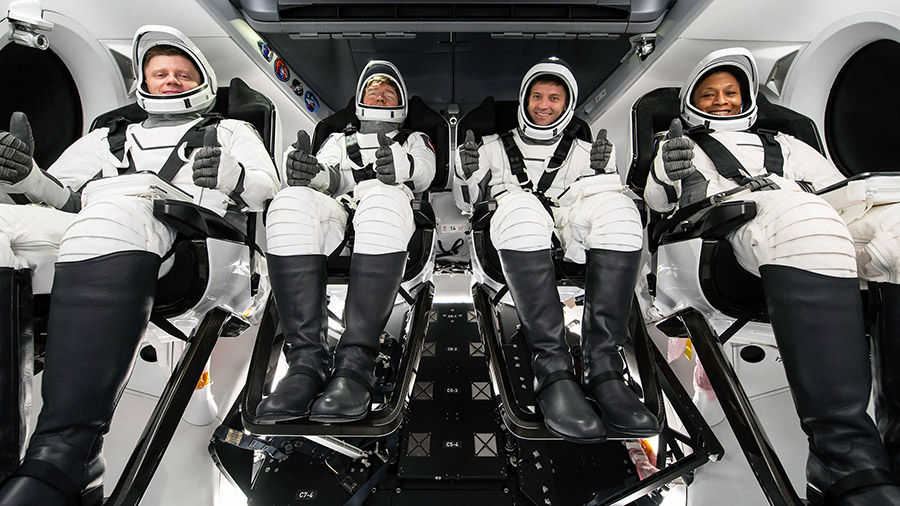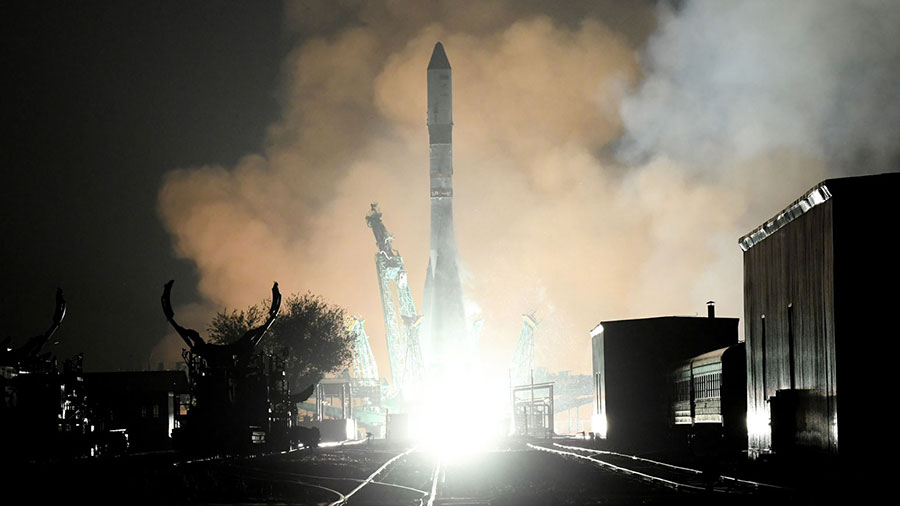
Space physics, aging research, and science hardware filled the schedule at the beginning of the week for the Expedition 70 crew. The International Space Station residents are also packing a U.S. cargo craft for its departure and return to Earth at the end of the week.
Space manufacturing is the next big step toward commercializing low-Earth orbit. Researchers are taking advantage of the weightless environment to create advanced fiber optic cables that are superior to those manufactured on Earth. NASA Flight Engineer Loral O’Hara worked in the Destiny laboratory module swapping optical fiber samples being produced and drawn inside Destiny’s Microgravity Science Glovebox. The samples are made from zirconium, barium, lanthanum, and aluminum sodium fluoride and provide unique optical transmission capabilities. Results may benefit a range of industries and applications such as atmospheric monitoring from space and laser surgery on Earth.
NASA Flight Engineer Jasmin Moghbeli spent the afternoon in the Kibo laboratory module researching space-caused aging symptoms like those seen in the elderly on Earth. She removed liver stem cell samples from an incubator then processed them inside Kibo’s Life Science Glovebox. The Space AGE investigation is observing how aged immune cells affect liver regeneration providing deeper insights into the biology of aging and its effects on disease mechanisms.
ESA (European Space Agency) Commander Andreas Mogensen spent the majority of his day on biomedical duties collecting, processing, and stowing his blood and urine samples for future analysis. The two-time station visitor also serviced gear supporting a study investigating how 360-degree virtual reality experiences may benefit crew psychology on long-term space missions.
Starting his morning in the Kibo lab, astronaut Satoshi Furukawa loaded a small satellite orbital deployer into Kibo’s airlock. The Japanese robotic arm will grapple the deployer and remove it from the airlock after it is depressurized and opened. The deployer will then be positioned outside and pointing away from the station for the release of a series of CubeSats into Earth orbit for educational, private, and governmental research.
Furukawa later joined Moghbeli transferring frozen research samples from station science freezers into the SpaceX Dragon cargo spacecraft. Dragon will return to Earth at the end of the week carrying the preserved samples inside science cargo freezers for retrieval and analysis. O’Hara also packed Dragon with return cargo securing it inside the spacecraft for the descent into Earth’s atmosphere and splashdown off the coast of Florida.
Veteran cosmonaut Oleg Kononenko kicked off his day transferring water from the Progress 86 resupply ship into the space station. Cosmonaut Nikolai Chub worked throughout Monday studying how electrical and magnetic fields affect fluid systems in microgravity. Flight Engineer Konstantin Borisov checked out electrical components and control panels, watered plants for a space botany study, then replaced Roscosmos computer software.
Learn more about station activities by following the space station blog, @space_station and @ISS_Research on X, as well as the ISS Facebook and ISS Instagram accounts.
Get weekly video highlights at: https://roundupreads.jsc.nasa.gov/videoupdate/
Get the latest from NASA delivered every week. Subscribe here: www.nasa.gov/subscribe



